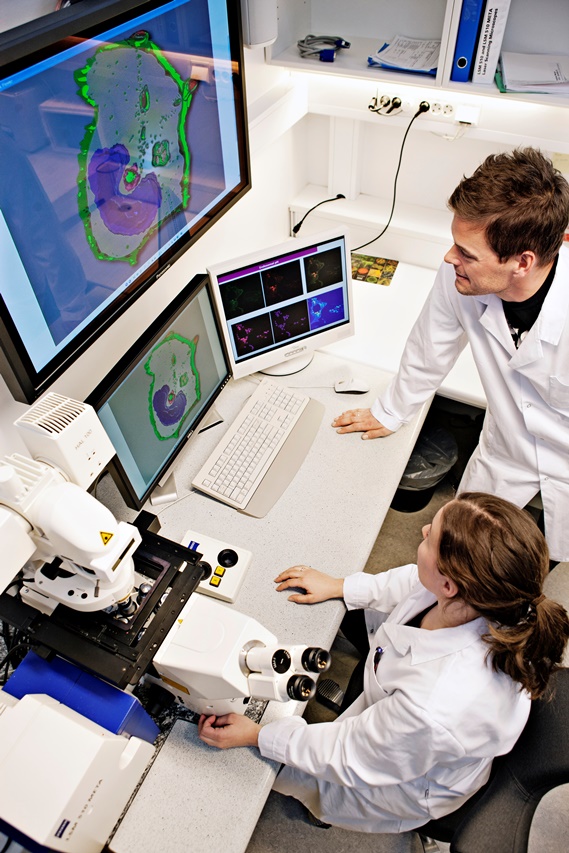PhD programmes - CEMIR
The PhD programme in Molecular Medicine
The objective of the PhD programme in Molecular Medicine is the acquisition of basic knowledge and methodology related to understanding and study of normal and pathological functions in humans at a molecular level.
CEMIR offers three PhD courses
Receptor Signalling and Trafficking (MOL8006)
Communication between cells by way of proteins, peptides and small molecules that activate cellular receptors, is crucial for the development and function of all multicellular organisms. Dysfunctional receptor signalling is the cause of a variety of diseases, and most prescription drugs target specific receptors.
This advanced course will describe the most commonly used methods for studying receptor signalling and will discuss cell signalling downstream of the most important receptor classes. Examples of signalling in development, physiology and disease will be provided. Because receptor signalling is tightly coupled to the intracellular trafficking of receptors, such trafficking – and its impact on signalling – will also be discussed in depth.
The course will consist of a combination of lectures (by specialists in receptor signalling and trafficking), colloquia and presentations of selected topics by the students. It is relevant for advanced students within biochemistry, molecular/cell biology, medicine and pharmacy.
Molecular Mechanisms of Inflammation (MOL8009)
The course will give an overview of mechanisms and signalling pathways involved in inflammatory processes, mainly connected to activities at CEMIR . This is inflammation related to infections, but also sterile inflammation (that can be observed during e.g. autoimmune diseases, heart infarction/failure and obesity).
Innate and adaptive immune responses will be discussed, with an emphasis on innate immunity. Cell types that are involved include macrophages, monocytes, dendritic cells, neutrophils, dendritic cells, T cells, B cells, osteoblasts andosteoclasts. Recognition- and signalling mechanisms include complement, interactions between complement and other signals, phagocytosis, Toll-like receptors (TLRs), inflammasomes, RIG-I family and other helicases, cGAS, C-type lectin receptors, autophagy, responses to different types of bacteria, viruses, protozoan parasites and fungi, sterile inflammation, vaccines/adjuvants andinflammatory cytokines.
Inflammatory signals will be discussed in relation to clinical situations such as infections, immunodeficiencies, inflammation during pregnancy, inflammatory bowel disease, heart failure and bone inflammation.
Advanced Cellular Imaging Techniques (MOL8010)
In this course students will learn about light microscopy and electron microscopy, and will learn about molecular imaging techniques with a focus on imaging innate immune cell activation. The course will provide the theoretical background for diverse imaging techniques that can be applied to study innate immune activation. Students will have practical training in imaging.
After completing the course the student will have
- Learnt about general concepts of fluorecence imaging;
- Gained insight into different types of imaging used in biomedical research, such as confocal laser scanning microscopy (LSM), stimulated emission depletion microscopy (STED) and electron microscopy (EM);
- Had hands on wet lab experience with microscopes and has imaged biological samples;
- Learnt about techniques allowing to measure molecular interactions by microscopy such as FRET; and
- Knowledge about innate immunity pathways and how these can be captured by microscopy.

